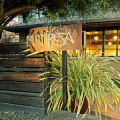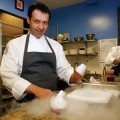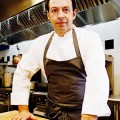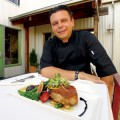In 2005, the Michelin guide’s specially trained inspectors, whose secret identities are guarded as jealously as those of international spies, came to visit New York, and the first American Michelin guide was released in 2006. Its reception by restaurant critics and locals was just above lukewarm.
It is now almost 2011, and Michelin has released the fifth edition of its Northern California guide, and there are still many who find the guide unreliable and would rather turn to Zagat, Yelp or the column of a local food critic for restaurant advice. There are others who still don’t know what the tire man has to do with food.
One of the biggest concerns is that while the inspectors might be well versed in French food, their understanding of the generally diverse culinary culture of the United States is less than perfect. A few years ago the guide’s reputation was further thrown into question when an ex-Michelin inspector, Pascal Rémy, went public with his memoir,“The Inspector Sits Down to Eat,” which stated that there were far fewer inspectors than the guide claimed to hire, that they ate at the starred restaurants far less often than the guide claimed and that there were undisputed favorites who could do no wrong independent of what they served.
There is certainly a bias toward the upscale and the French. Most of the two- and three-star restaurants in the United States are influenced by French cooking methods if they’re not outright French, and none of them are what you might call inexpensive. This year, three new South Bay restaurants were awarded stars: Alexander’s Steakhouse, Baumé and Dio Deka. When asked how the guide has changed things for them, Alexander’s executive chef Jeffrey Stout said that since receiving his star he has gotten more recognition from the culinary community: “A lot more eyes on me—people shake my hand and have recognized me a few times outside of work.”
At Dio Deka, general manager and partner Nikos Kalouris has noticed that the type of clientele has changed. “Los Gatos has become a destination place, and people are coming from further away,” he says. “There are 20 to 30 percent more clients from out of town, and the restaurant’s volume has gone up 15 to 20 percent.” The only downside is the added pressure, because as Kalouris says, “Once you have a star, you do not want to lose it.”
Baumé’s Bruno Chemel was awarded a star at Chez TJ, so he is not a Michelin newcomer. Baumé is a small restaurant and has been busy since it opened, so the effect of the guide has been less obvious, although Chemel has received congratulations from fellow chefs and many dinner guests. When asked if he was aiming for stars he replies, “I was thinking about it, but I work for my customers, not the guide.” Addressing the added pressure that having a star entails, which all three newcomers feel, he says, “It would be nice to have two or three stars, but it would be terrible to lose your single one. You have to be constantly improving. I’m listening to my customers and learning every day.” In spite of its critics, having a Michelin star holds sway even as far away from France as the South Bay. For the three new restaurants that are now part of the pantheon, the guide has generated more business from further afield and given the chefs an overnight sheen of celebrity. After all, there are 1,900 one-star, 300 two-star and 72 three-star restaurants in the world. If that’s not a cool club to be a part of, I don’t know what is.
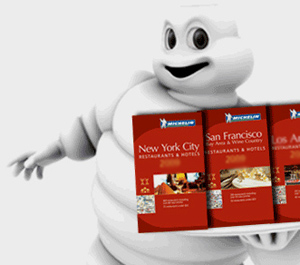
 Review: Mudai Ethiopian
Review: Mudai Ethiopian  Big Gift for Stanford
Big Gift for Stanford 